AUSTRALASIAN
Tropical & Subtropical Moist Broadleaf Forest (Rainforest)
The Australasian forest is (on a global scale) relatively small area of rainforest, but has a high range of endemics.
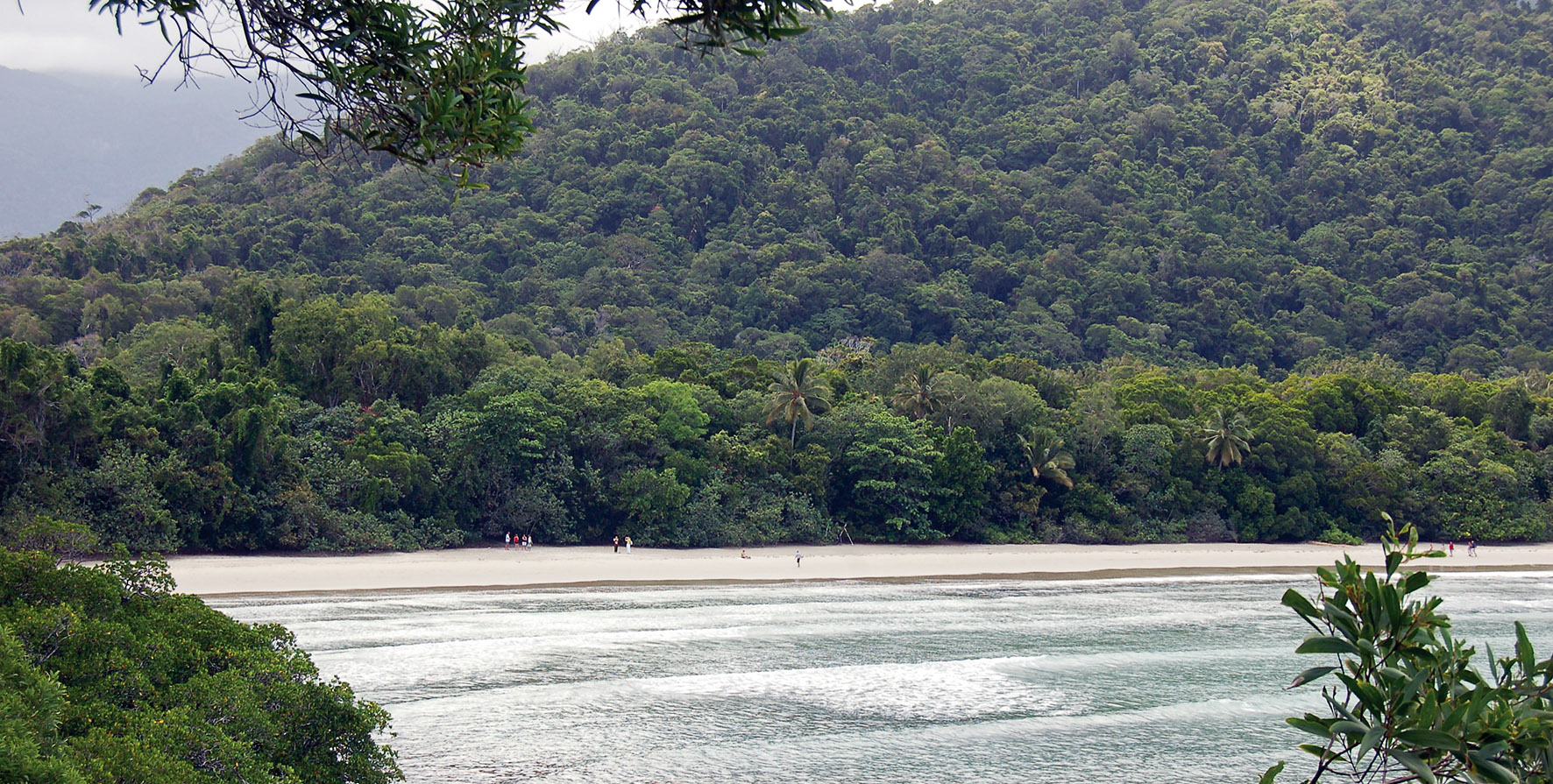 the lowland rainforest at Cape Tribulation, Australia.
the lowland rainforest at Cape Tribulation, Australia.These forests are found throughout the island of New Guinea, north-east Queensland, and to the islands of Melanesia, including the Solomons, Vanuatu and New Caledonia. These forests also supply many of the species that have ended up in Fiji and beyond (Fiji and eastwards is included in Rainforest of Oceania).
The lowland 'jungle' forest is still intact and found around the New Guinea coast, and is protected in small patches in Australia in the Daintree and north Queensland. There is upland rainforest in the Atherton Tablelands inland of Cairns, and even higher altitude forest in the valleys of central New Guinea. Patches of subtropical rainforest are found all the way down along the east coast until the southern border of Queensland.
For the page on the Ecology of the Australasian rainforest
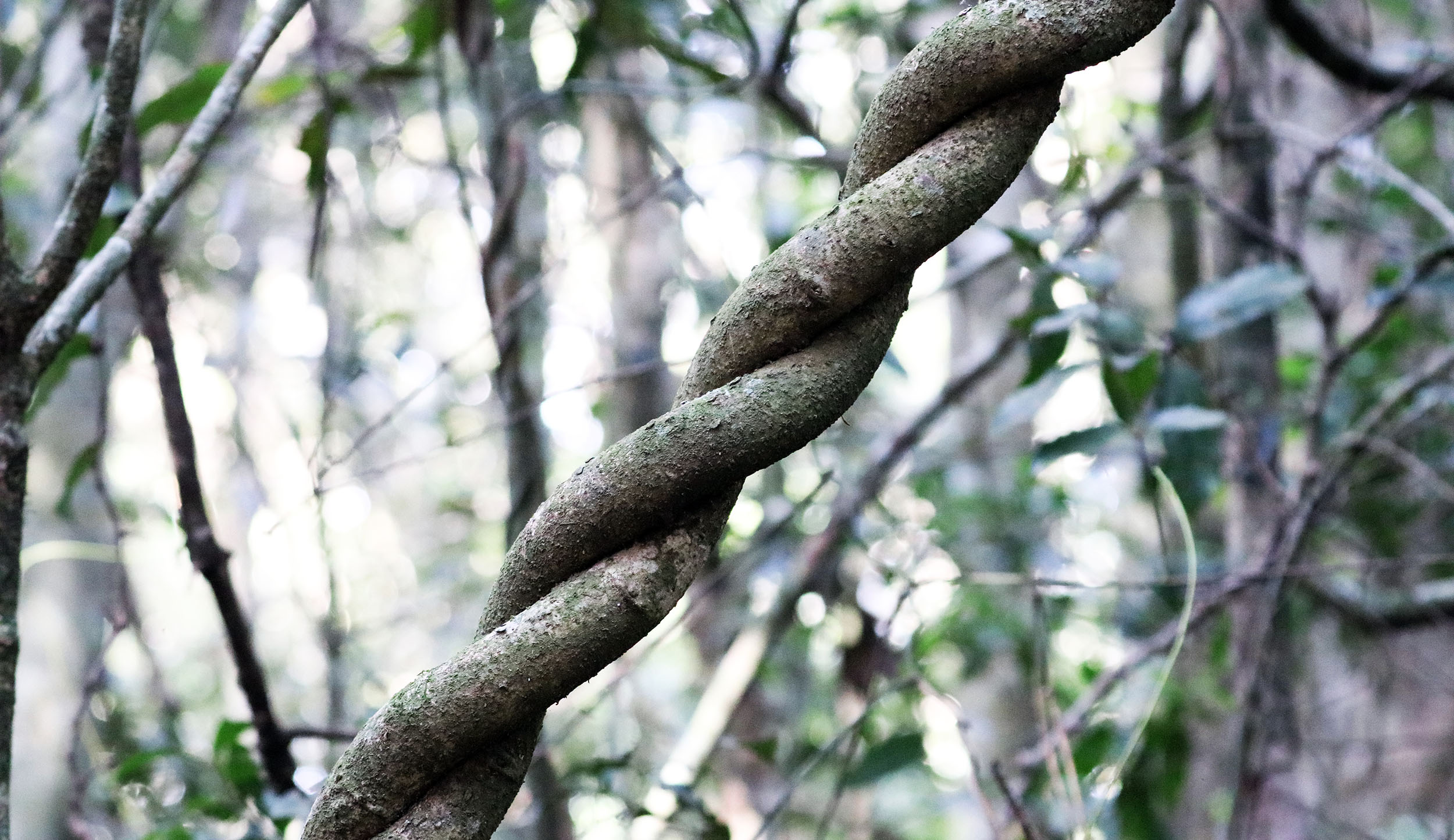 (O'Reillys Lodge)
(O'Reillys Lodge)The family Proteaceae is mostly a family of plants found growing in sandy soil heathlands in southern Africa and south-west Australia, but with some interesting species in the rainforest along the east coast of Australia, including some of the dominant canopy trees.
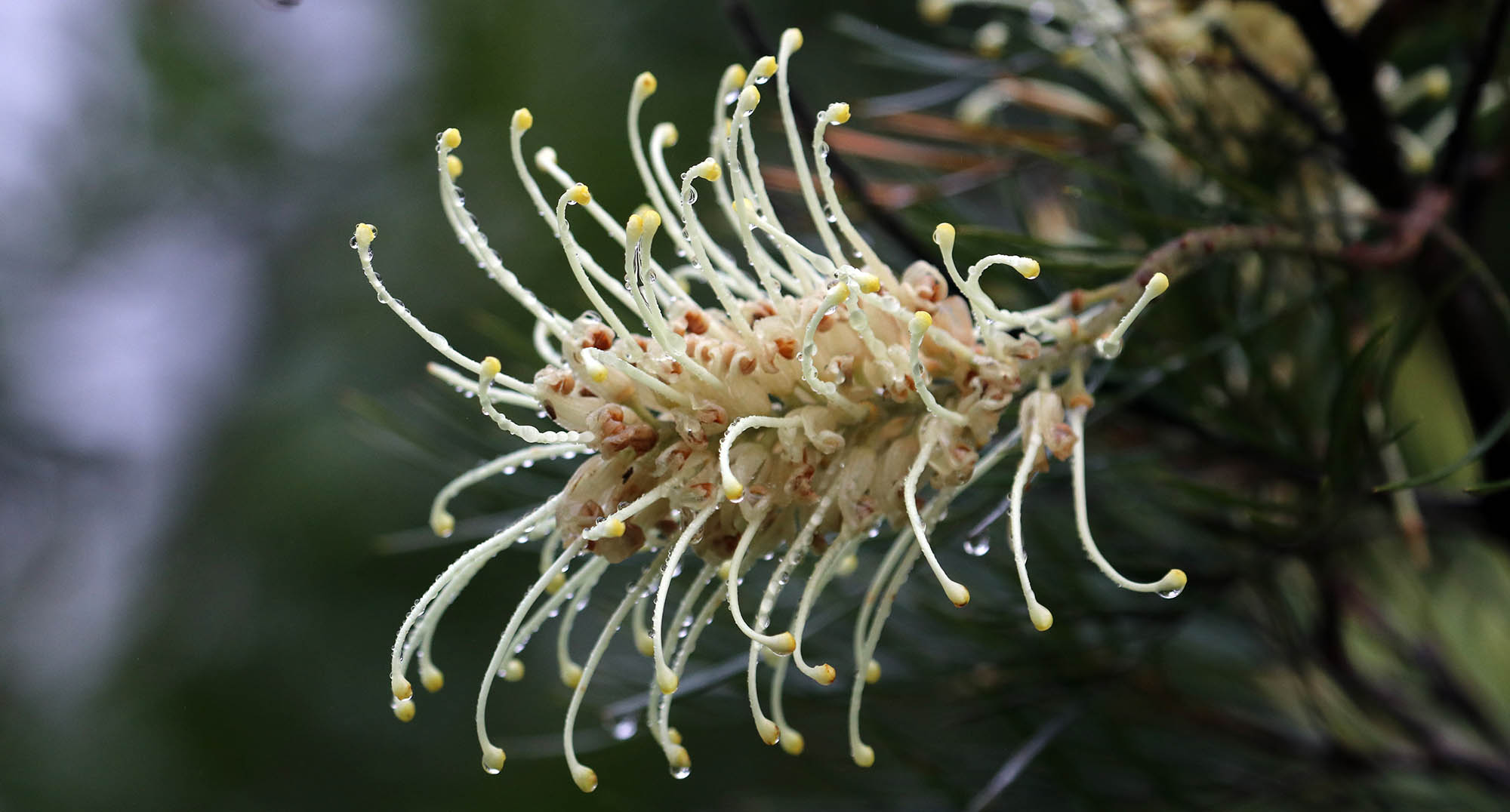 (Possum Valley)
(Possum Valley)The genera in the rainforest include:
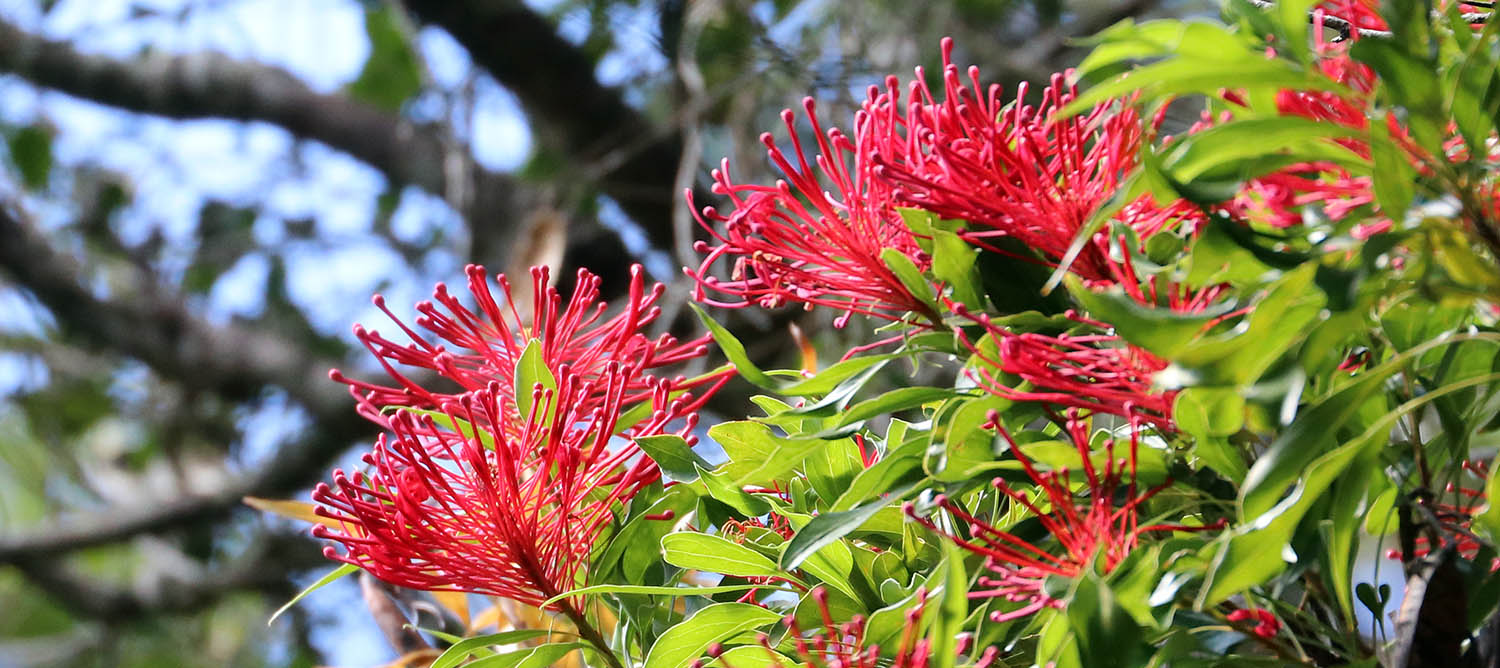 Alloxylon spp. 'Waratah Trees' (O'Reillys, Queensland)
Alloxylon spp. 'Waratah Trees' (O'Reillys, Queensland)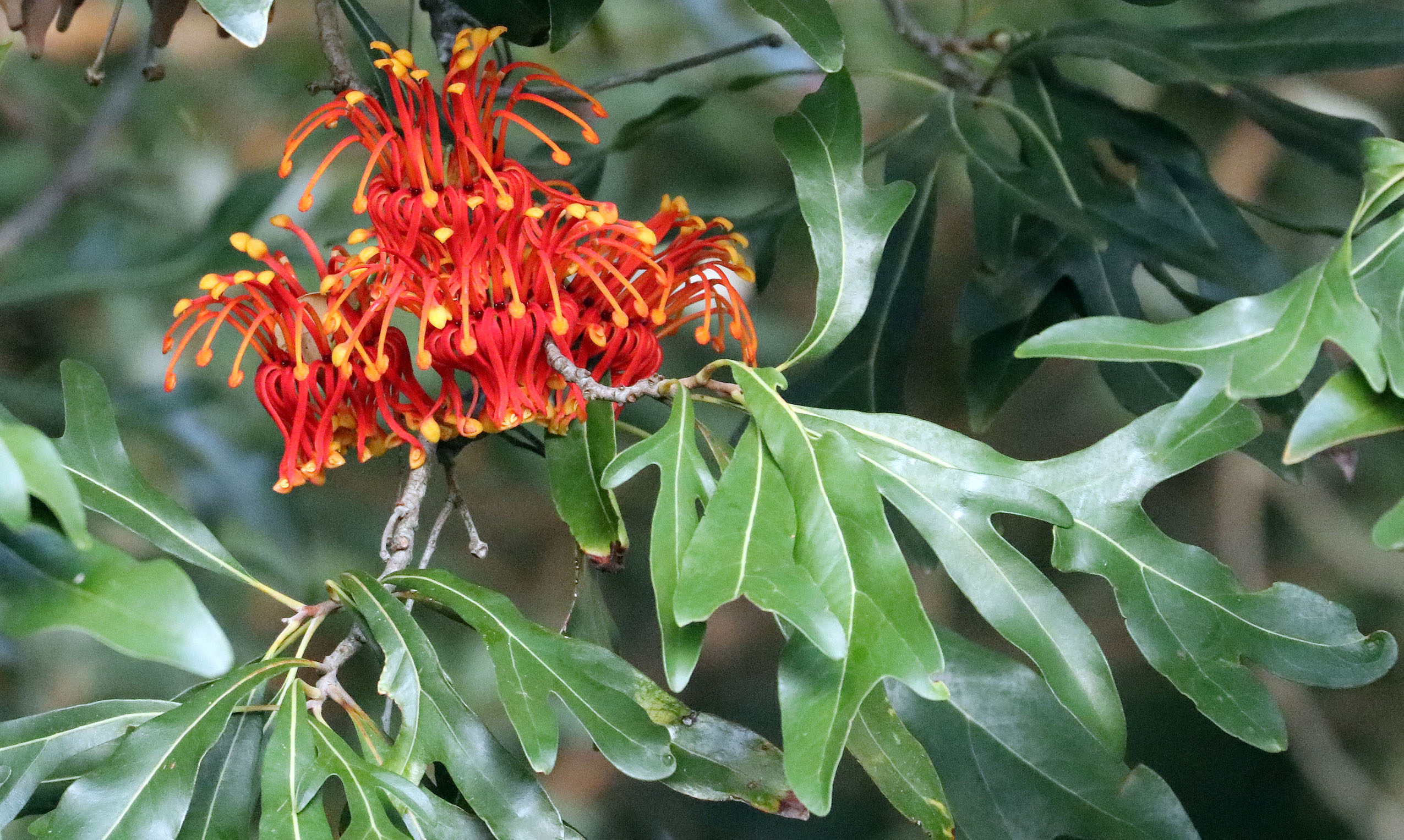 Stenocarpus spp.
Stenocarpus spp.One of the more infamous plants of the Australian and New Guinea rainforest is Dendrocnide moroides, 'Stinging Bush', or 'Gympie Gympie'. The small hairs on this plant cause extreme pain. Do not use these wide leaves as toilet paper!
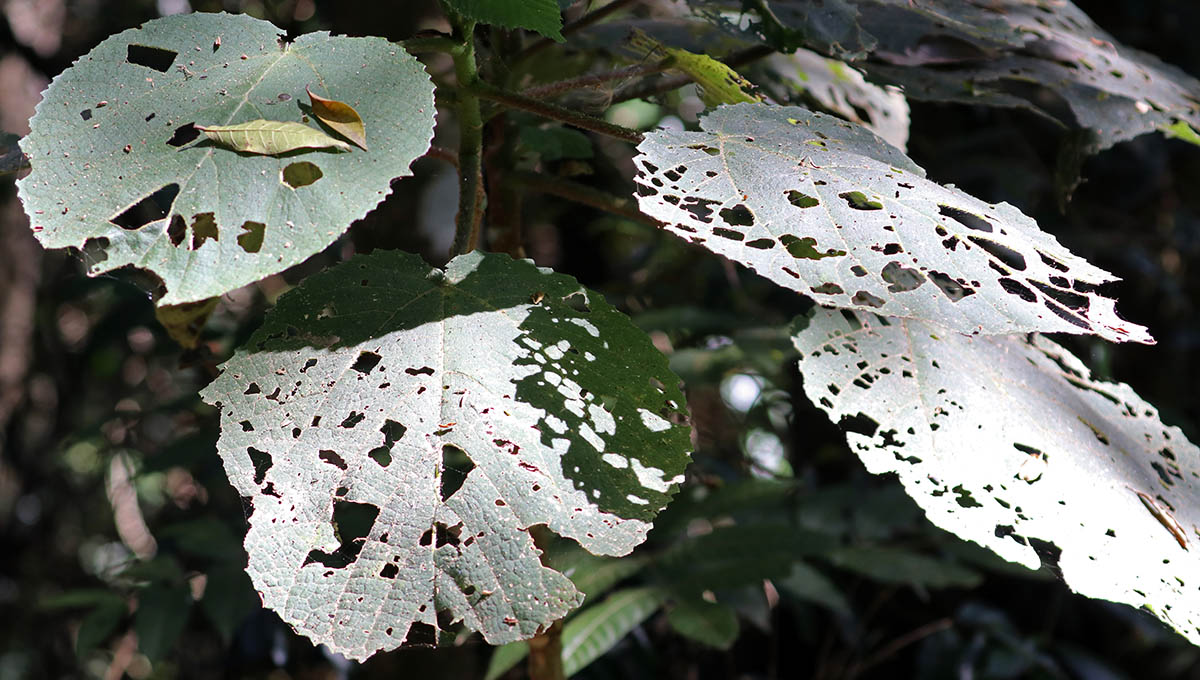 (Lamington National Park, Australia)
(Lamington National Park, Australia)The huge family Euphorbiaceae has over 6000 species spread over 250 genera, making it the fifth largest family of plants. They are found throughout the world, from tropical areas to temperate. On a global scale, the huge range of different species has few easily identifiable features. However, in the Australasian rainforests, many of the species in this family tend to have some features in common: they often have small not very colourful flowers, rounded or heart-shaped leaves, exudate or 'sap' when a branch is broken, and are commonly pioneer or edge species. There are over 150 species found in the Australian tropical rainforest, and they are often important 'pioneer' species, such as the Macarangas.
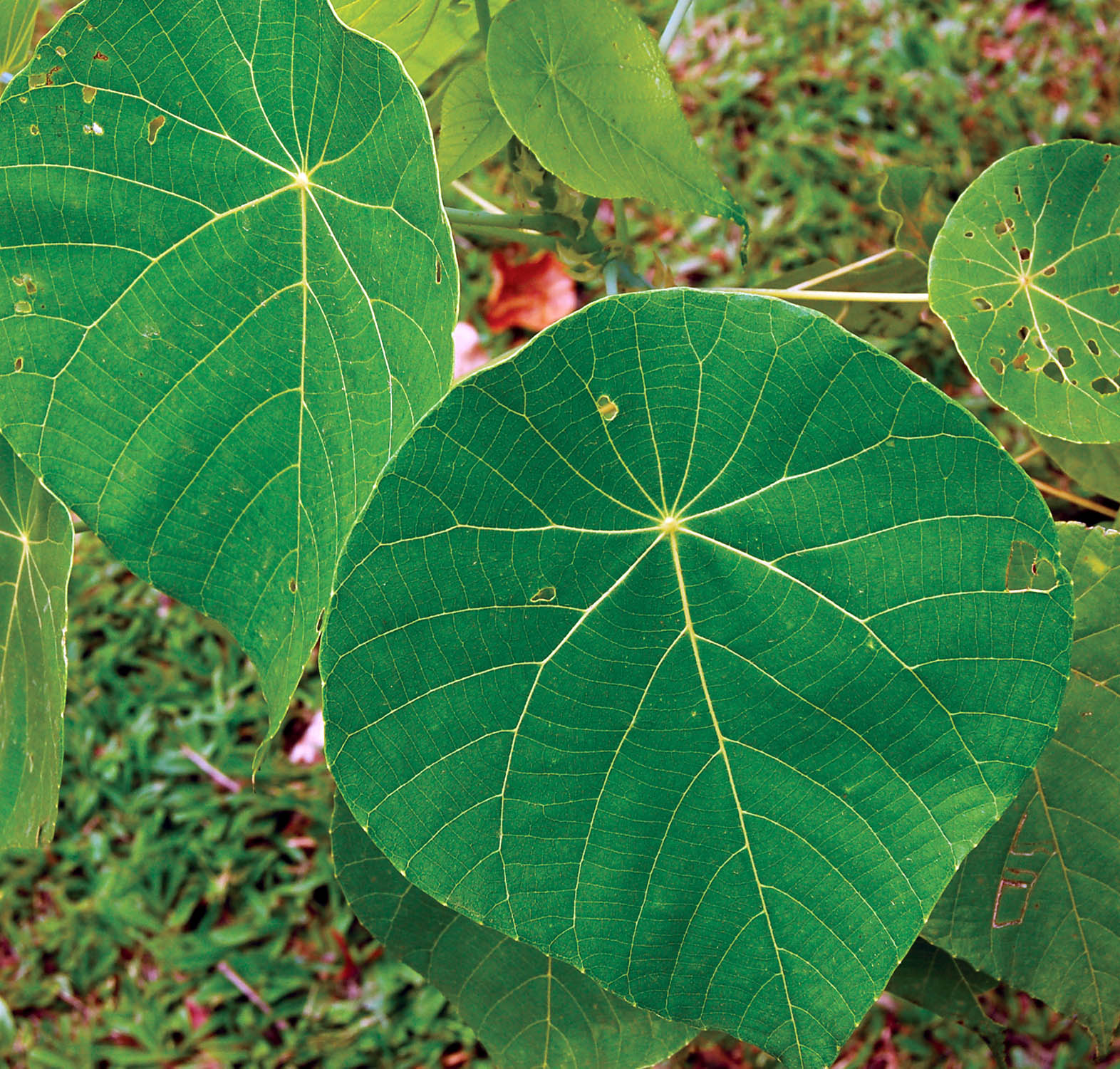 (Daintree, Queensland, Australia).
(Daintree, Queensland, Australia).The family Myrtaceae is arguably the most important on the Australian continent, although they are not as obvious in the rainforests as they are in the adjacent woodlands. The flowers in the Myrtaceae family are usually quite showy, but not in the usual way; instead of colourful petals, there is instead a seemingly unlimited number of stamens, giving the flower the appearance of a brush. Botanists often divide the family into two different sub-families. One group are the ‘woody-fruited myrtles’. These are dominant in drier parts of our continent, and include the classic Australian genera such as Eucalyptus and Melaleuca. Some Eucalypts do sneak into the forest, such as Eucalyptus grandis, 'Flooded Gum', 'Rose Gum'. (below). The other group, the ‘soft-fruited myrtles’ are usually associated with wetter environments and found mainly in the tropical rainforests of the Americas, Australia and parts of Asia and the Pacific. It includes such genera as Syzygium, Acmena and Eugenia, and are commonly known as the ‘Apples’, ‘Satin-ashes’ and ‘Lilly-pillies’ and usually produce fleshy, colourful fruits.
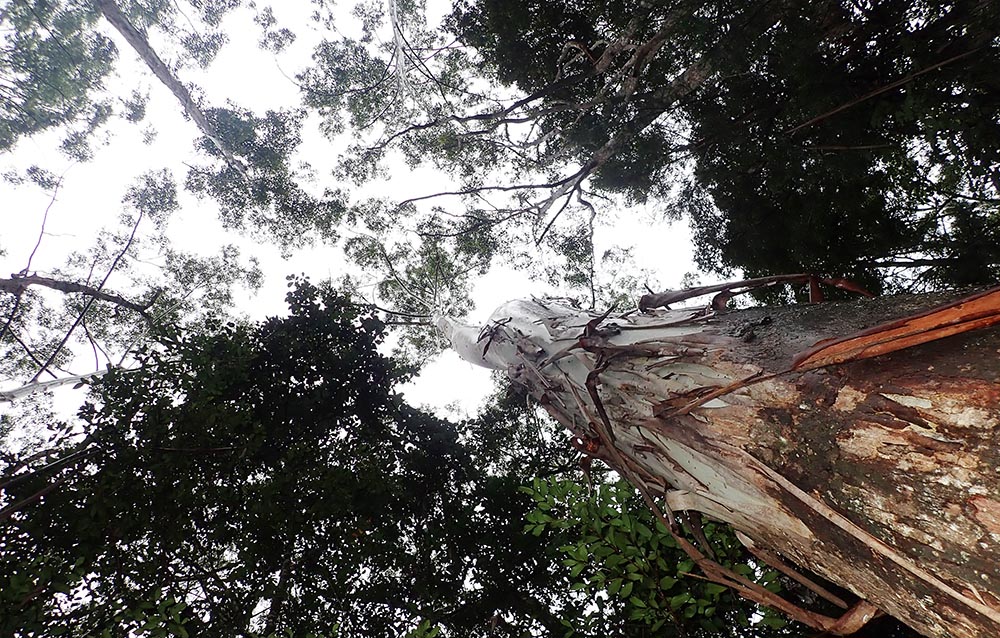 'Flooded Gum', 'Rose Gum'. (Atherton Birdwatching Lodge).
'Flooded Gum', 'Rose Gum'. (Atherton Birdwatching Lodge).For the page on Insects of Australian & New Guinea rainforest
 Dei Dei Hotsprings (Papua New Guinea)
Dei Dei Hotsprings (Papua New Guinea)For the page on butterflies & moths of the Australasian rainforest
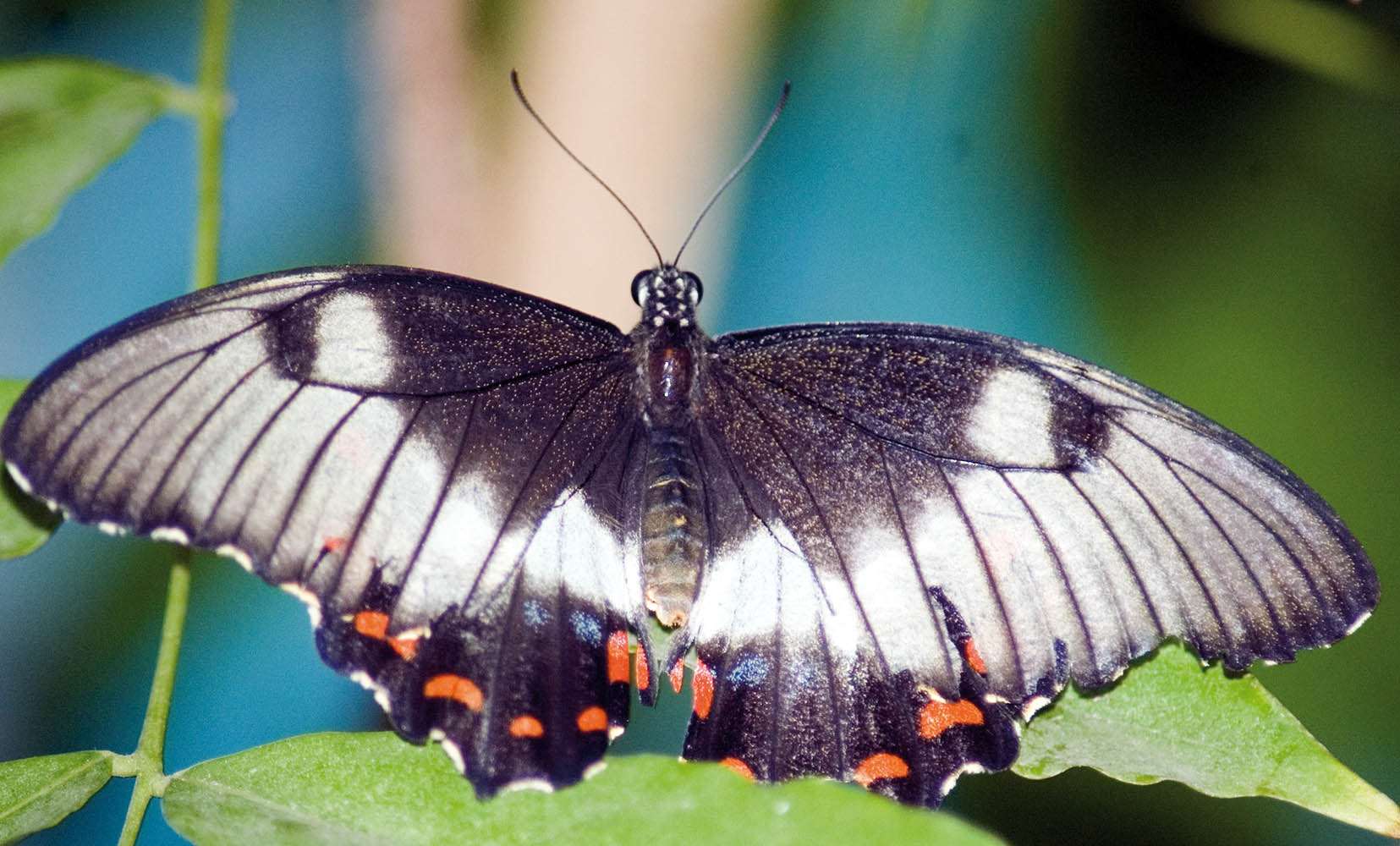
For the page on the reptiles of the Australasian rainforest
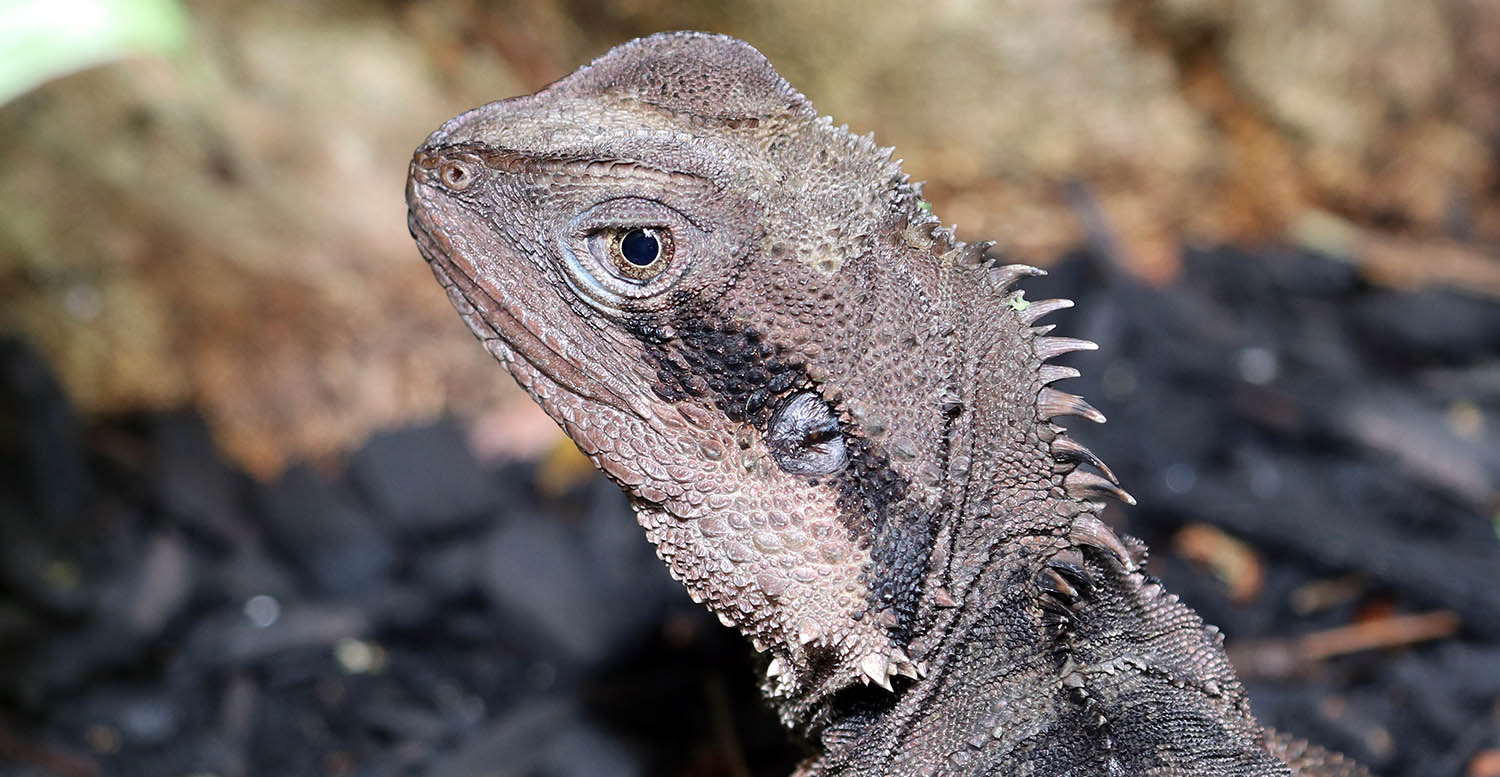
The largest birds in the Australasian rainforest, (indeed, in any rainforest on the planet) are the Cassowaries of the family Casuariidae. There are three species; they are all found in New Guinea, with one species also found in north-east Australia.
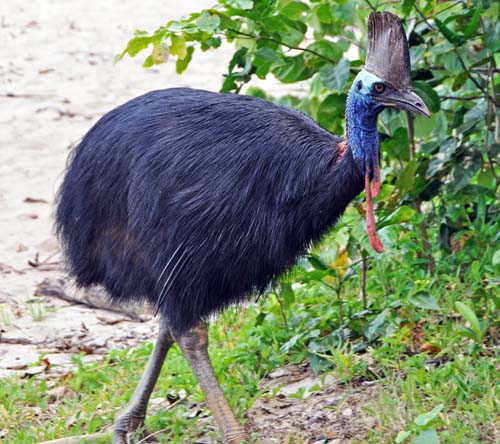 'Southern/Double-wattled Cassowary', (Etty Bay, Australia)
'Southern/Double-wattled Cassowary', (Etty Bay, Australia)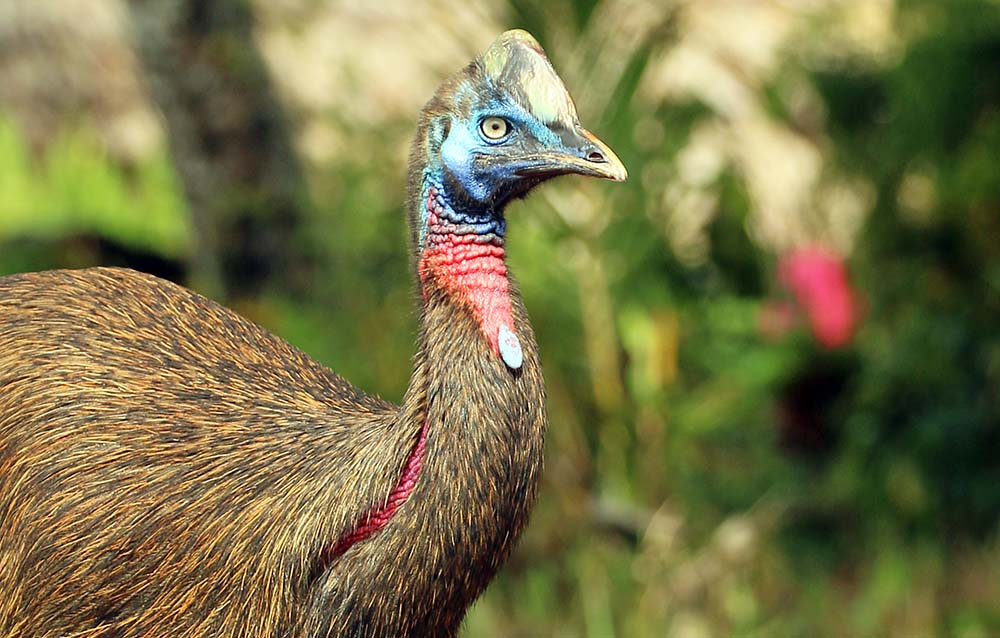 'Northern/Single-wattled Cassowary' juvenile, (Sepik River, Papua New Guinea)
'Northern/Single-wattled Cassowary' juvenile, (Sepik River, Papua New Guinea)The family Megapodiidae are mostly found in the Australasian region (with some spilling into Wallacea), and consist of large ground dwelling birds. The most distinctive feature of most species is their creation of huge mounds of decomposing vegetation to incubate their eggs.
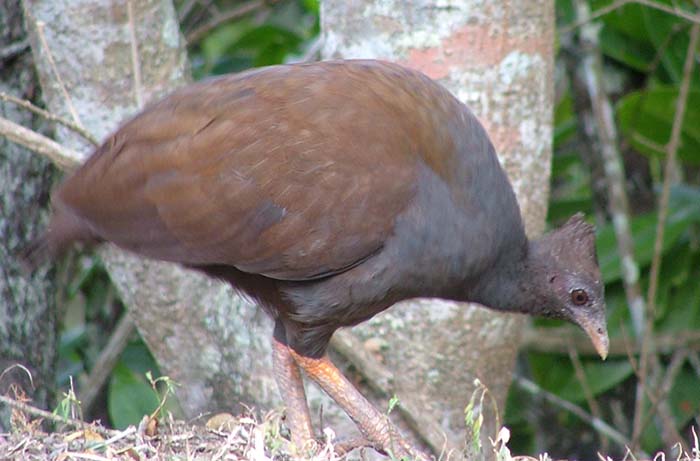 'Orange-footed Scrubfowl', (Cairns Botanical Gardens, Australia).
'Orange-footed Scrubfowl', (Cairns Botanical Gardens, Australia).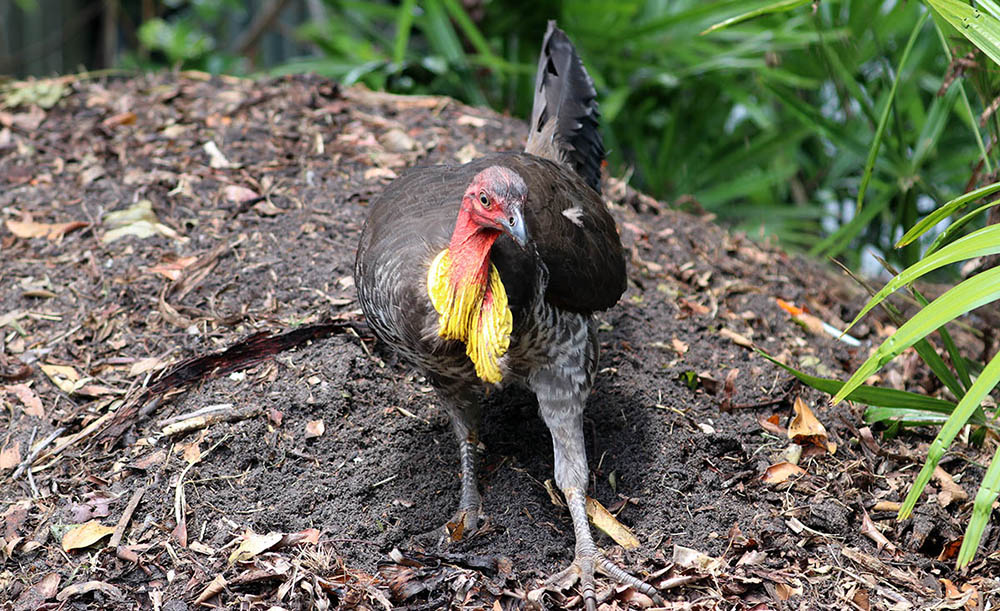 'Australian Brush Turkey', (Maroochydoore).
'Australian Brush Turkey', (Maroochydoore).The family Columbidae contains the world wide distributed doves & pigeons. While most people are familiar with the ubiquitous 'feral pigeon' of towns and cities, the rainforest of Australasia, especially the coast and islands of the south west pacific, have a wonderful range of the most colourful pigeons on the planet.
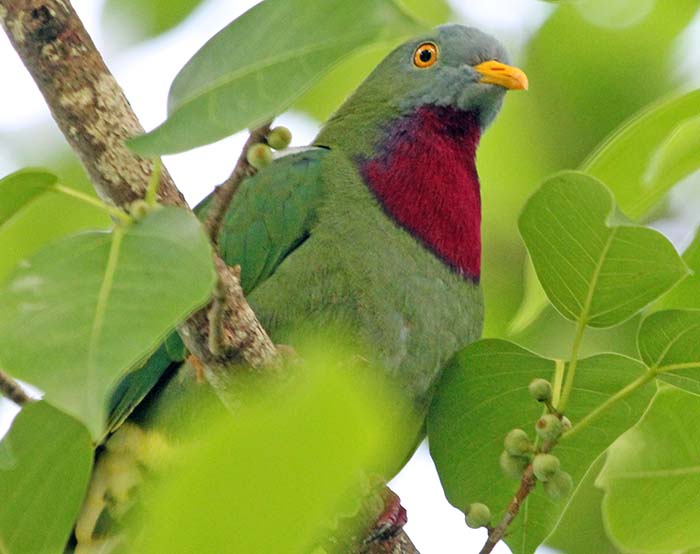 'Claret-breasted Fruit Dove', (Maravagi, Solomon Islands).
'Claret-breasted Fruit Dove', (Maravagi, Solomon Islands).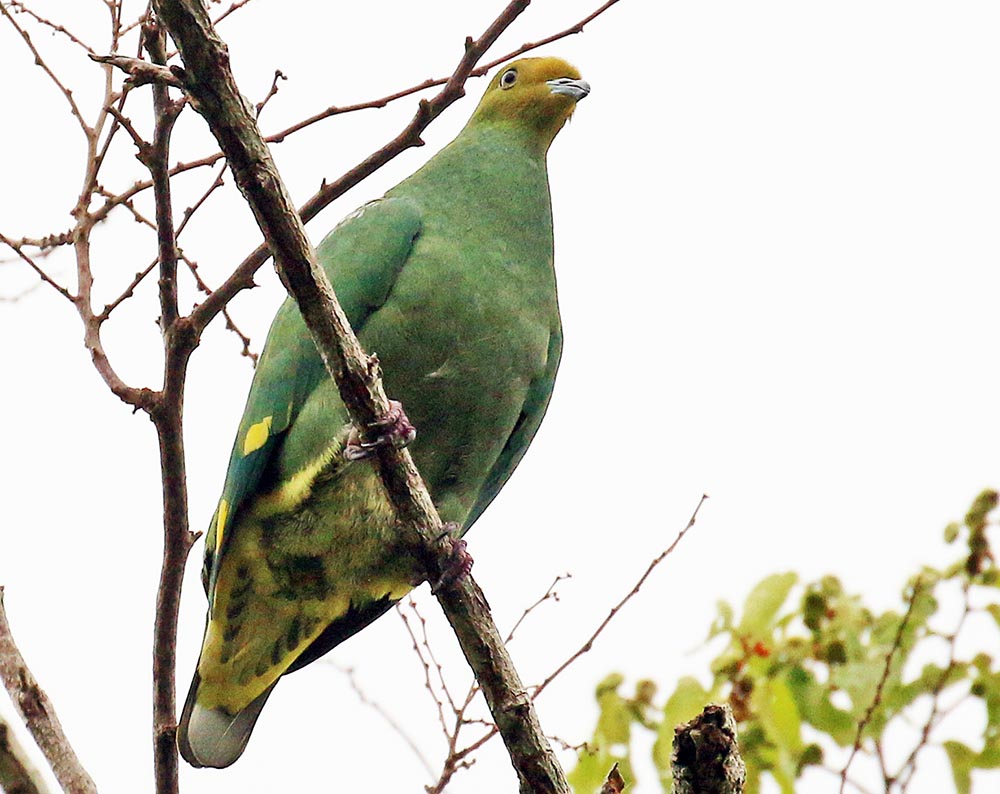 'Tanna Fruit Dove', (Espiritu Santo, Vanuatu)
'Tanna Fruit Dove', (Espiritu Santo, Vanuatu)The rainforest of Australia, New Guinea, and the islands of the tropical south-west Pacific have a range of big beautiful parrots.
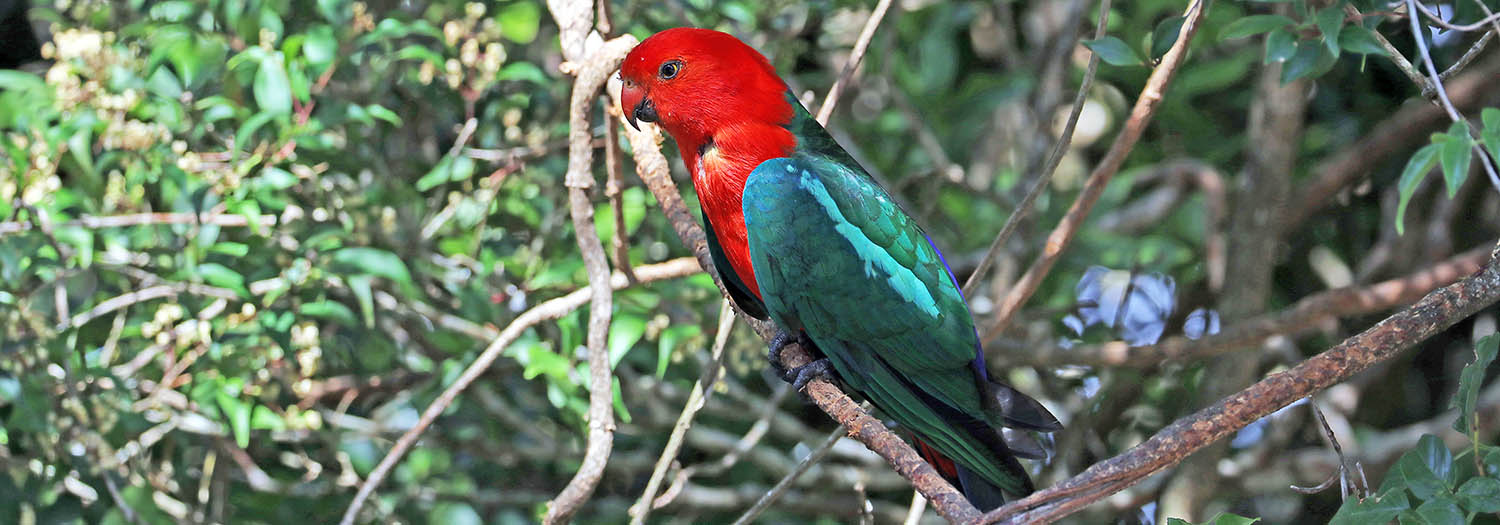 'Australian King Parrot', (O'Reilly's Lodge parrot feeding area, Australia)
'Australian King Parrot', (O'Reilly's Lodge parrot feeding area, Australia)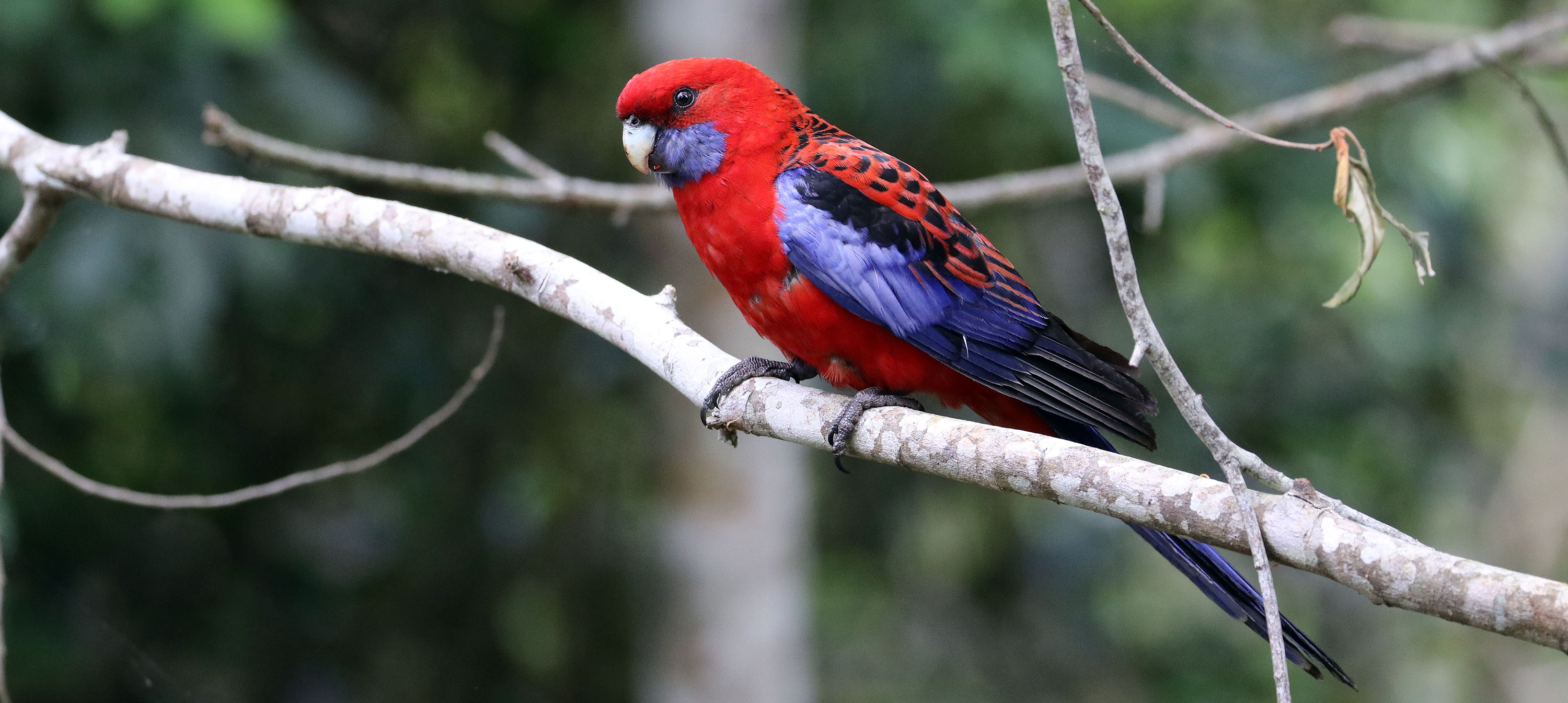 (O'Reilly's)
(O'Reilly's)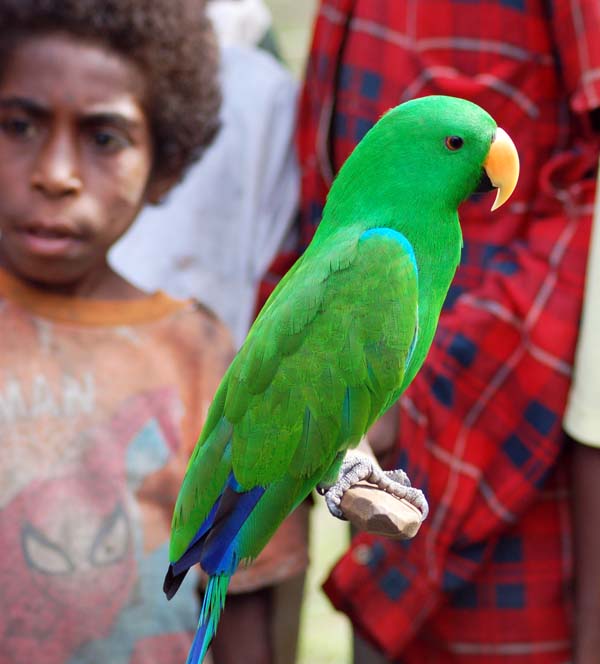 male 'Eclectus Parrot' (Sepik River, Papua New Guinea)
male 'Eclectus Parrot' (Sepik River, Papua New Guinea)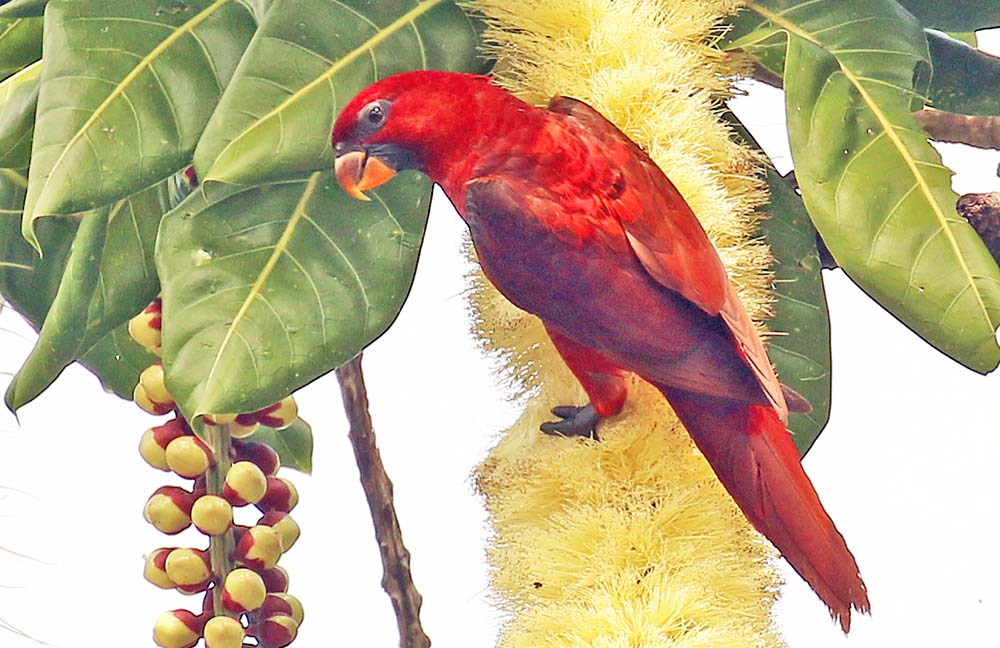 'Cardinal Lorikeet', (Marovo Lagoon, Solomons).
'Cardinal Lorikeet', (Marovo Lagoon, Solomons).For the page on passerine songbirds of the Australasian rainforest
 (O'Reilly's)
(O'Reilly's)For the page on the mammals of the Australasian rainforest
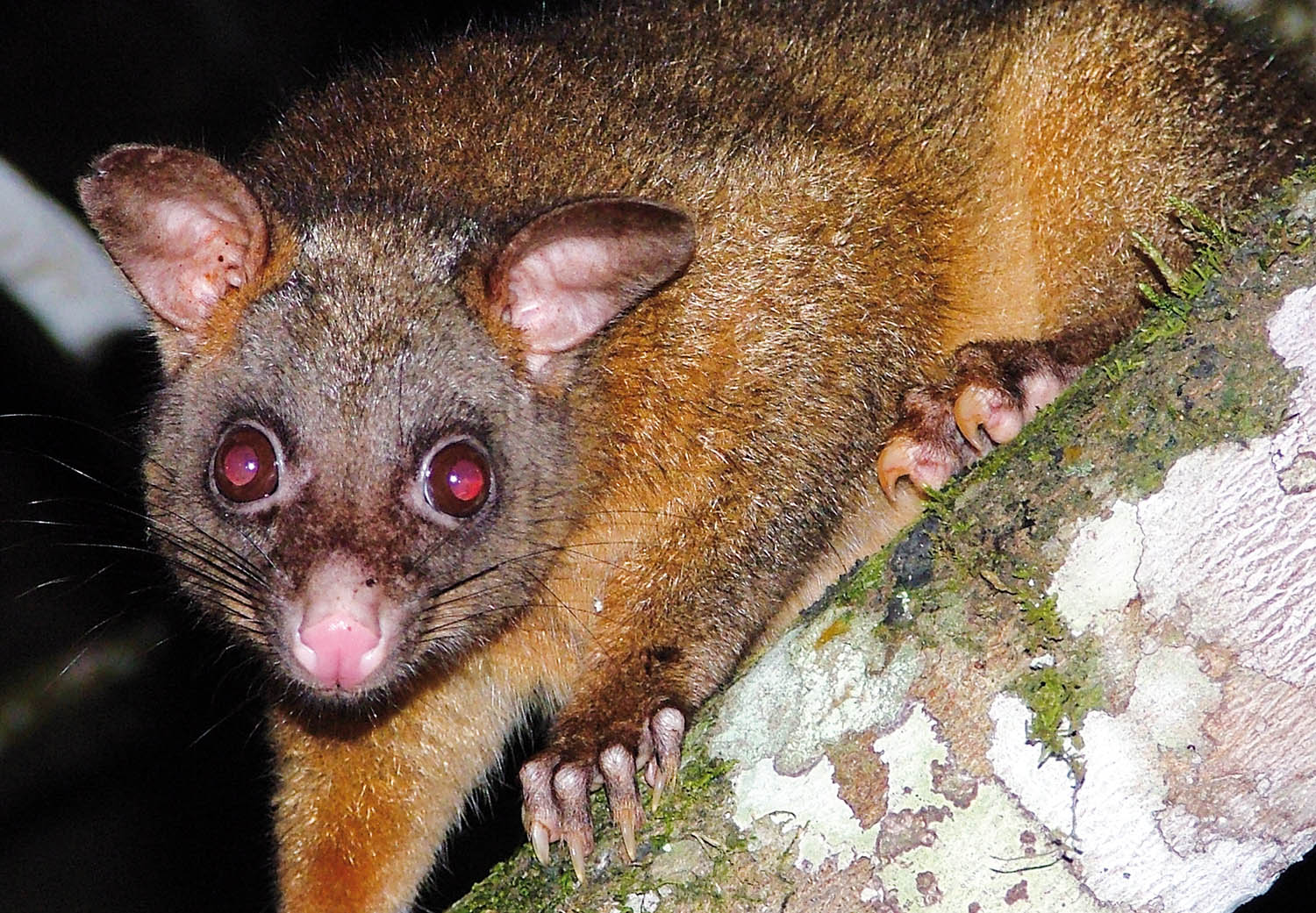
Places to experience the Australasian rainforest
For a chance to stay in and explore the beautiful subtropical rainforest, there is the famous O'Reillys Lodge, with easy and great birdwatching, located in south-east Queensland, Australia. Further north is the centre of rainforest excursions in Australia, Cairns, Queensland. While in the town, there is the Cairns Botanical Gardens and for captive wildlife: Cairns Tropical Zoo. South of here is Mission Beach and Etty Bay, the best places to see Cassowary. North of Cairns is the Daintree Australia, not as good as the tablelands is for wildlife, but it is beautiful lowland rainforest, and includes the Daintree Discovery Centre. The Atherton Tablelands is the best place for birdwatching, and there are great value places to stay, including: the Atherton Tablelands Birdwatchers Cabin, Possum Valley, and the grand master himself: Chambers Rainforest Apartments Australia. Higher up in altitude is the national park of Hypipamee Crater, great for spotlighting nocturnal mammals.
The islands of Melanesia offer some relatively unspolit tropical rainforest. This includes the Arnavon (Arnarvon) Islands, and Marovo Lagoon. And then there is the largest and least known rainforest in Australasia, the jungle of Papua New Guinea. You can check out the relatively unknown Damawewe Caves, and in the north is the amazing Sepik River, great for culture and birdlife (if you can get there). The Indonesia half of New Guinea is getting more developed but areas such as Rajah Ampat are still well protected, including Gam Island, for Red Bird-of-Paradise., and Misool Island.